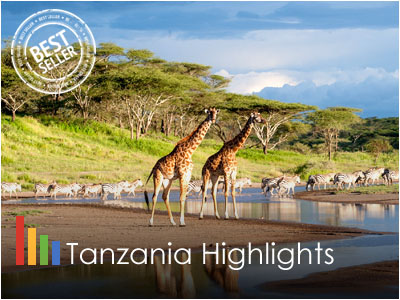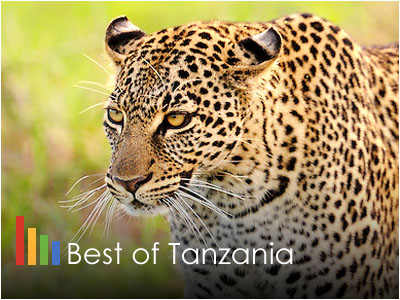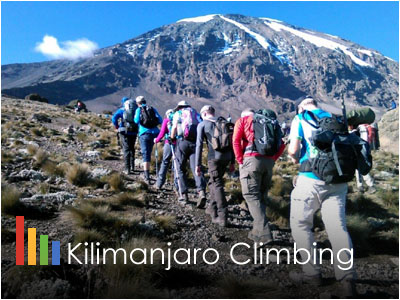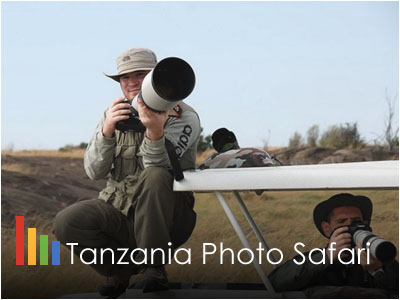Serengeti National Park, Tanzania, Africa
Serengeti National Park - Tanzania, Africa
The Serengeti National Park is home to an estimated 3 million plains game, the largest concentration of such wildlife in the world. Life on the Serengeti is a complex cycle defined by the rains. The short rains begin in November to mid-December, prompting the migration back to the south-western part of the Serengeti. From mid December to March, the short grass plains are alive with migrant herds of wildebeest, zebra and gazelles. When the long rains begin in April, the plains are at their most beautiful, vivid with wildflowers and teeming game...
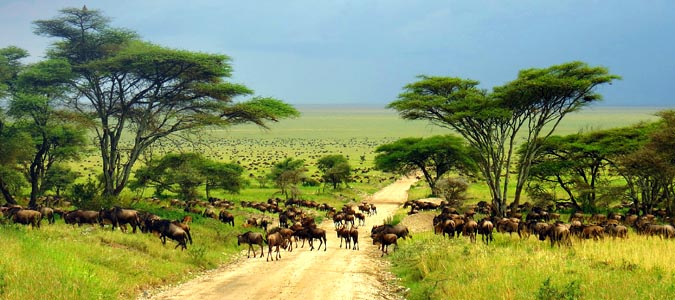
Basic Facts - Serengeti National Park
Serengeti National Park covers 14,763 sq km of endless rolling plains, which reach up to the Kenyan border and extends almost to Lake Victoria. The park is flourishing with magnificent wildlife. An estimated 3 million large animals roam the plains. People of the Maasai Tribe called it Siringitu - 'the place where the land moves on forever.' The Serengeti is known as one of the best wildlife sanctuary in the world. Two World Heritage Sites and two Biosphere Reservates have been established within this area. It's unique environment has enthused writers, filmakers as well as numerous photographers and scientists. The Serengeti ecosystem is one of the oldest on earth, the main characteristics of climate, flora and fauna have hardly changed in the past million years.
More About Serengeti National Park
Serengeti National Park is renown for the migration of animals. Every October and November, more than a million wildebeest and about 220,000 zebras travel south from the northern hills to the southern plains for the short tropical rains, and then journey west and north after the long rains in April to June. The animals' ancient instinct to move is so strong that no drought, gorge or crocodile infested river can hold them back. The Wildebeest migrate through a number of parks, reserves and protected areas and through a variety of habitat. From April to June, the Serengeti National Park is the theatre for one of the most impressive wildlife shows on earth. Hundreds of thousands of plains game begin moving north-westwards to the Seronera, then the Grumeti River. By the end of June or July, as the rains dwindle, huge columns of wildebeest and zebra cross the crocodile-infested Grumeti river into the Masai Mara, where there is permanent water. This spectacular moving feast is trailed by predators; lion, cheetah, leopard and hyena.
The history of Serengeti National Park dates back to millions of years ago. The history of human inhabitation revolves largely around the history of the African people, from the hunter-gatherers who wandered the plains, to the people of today who protect it as a main destination for travellers. The Serengeti's history has been virtually ignored, except Olduvai Gorge, where the Leakey family discovered fossils of human and animal ancestors dating back to almost two million years, and which is part of the Ngorongoro Crater Conservation Area. Tsetse flies in the woodlands, and sleeping sickness, guaranteed that the Serengeti was spared of European settlement, and with it the distinction of the wildlife that other African countries were subjected to. For more information regarding this topic, DO NOT hesitate to Contact Us.
Tanzania's oldest and most popular national park, the Serengeti National Park is famed for its annual migration, when some six million hooves pound the open plains, as more than 200,000 zebra and 300,000 Thomson's gazelle join the wildebeest’s trek for fresh grazing. Yet even when the migration is quiet, the Serengeti offers arguably the most scintillating game-viewing in Africa: great herds of buffalo, smaller groups of elephant and giraffe, and thousands upon thousands of eland, topi, kongoni, impala and Grant’s gazelle. The spectacle of predator versus prey dominates Tanzania’s greatest park. The Serengeti boasts large herds of antelope including Patterson's eland, Klipspringer, Dikdik, Zebra, gazelles, lion, impala, leopard, cheetah, hyena and other larger mammals like the rhino, giraffe, elephant and hippopotamus. Nearly 500 species of birds have been recorded in the park.
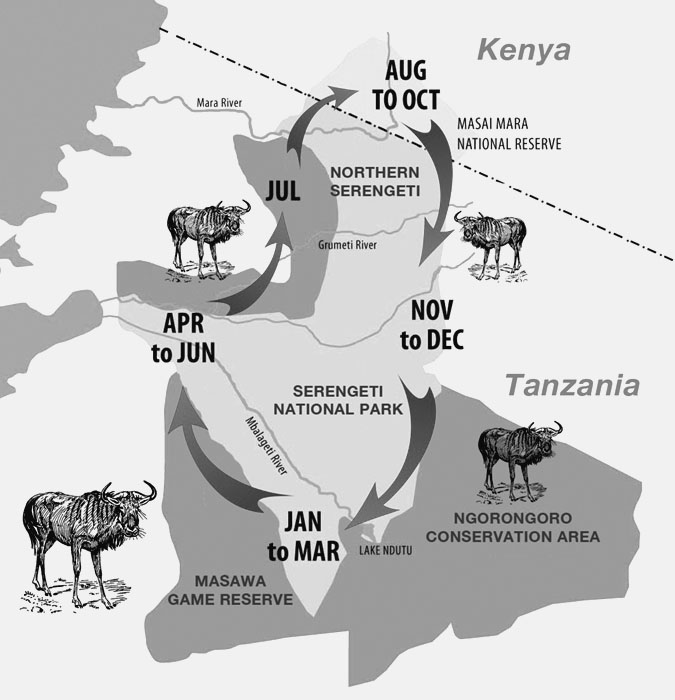
The Serengeti is an opportunity for one of the best game-viewing in Africa. The wildebeest migration, like a discernible thread, embraces and connects the Serengeti's ecosystem much as it has done for at least two millions years. Every year, with some seasonally dictated variations in timing and scale, one million wildebeest leave the southern Serengeti's short grass plains in search of the grass and water they need to survive. During their annual pilgrimage they will travel some 2.000 miles devouring 4.000 tonnes of grass a day. A quarter of a million will be born, many will die.
The Serengeti's climate is warm and dry. The tropical rainy season is from March to May, with short rains from October to November. The Serengeti is lush and green after the rains, but a steady drying up follows which inhibits plant growth and encourages the animals to migrate in search of waters. With altitudes ranging from 920 to 1,830 metres average temperatures vary from 15 degrees to 26 degrees Celsius. The coldest temperatures are experienced from June to October. The main activities available in Serengeti National Park include: Bird watching, Exciting walking safaris, unforgetable balloon ride in the Serengeti plains. Recomended Safari Lodges in the Serengeti National Park Includes, Seronera Wildlife Lodge, Lobo Wildlife Lodge, Serengeti Serena Safari Lodge and Serengeti Sopa Lodge.
AfriChoice operates a wide range of carefully designed tours and safaris to Serengeti National Park by providing transport and booking a hotel for you. Our safari consultants will always be at your assistance should you need a tailor-made holiday to this unique destination. NB: For more information regarding Serengeti National Park, DO NOT hesitate to Contact Us.
Contact Us for more information:
Tanzania Popular Wildlife Safaris
-
Serengeti Safari Adventure
Serengeti 3 Days Safari
-
Ngorongoro Crater Tour
Ngorongoro Crater Safari
-
Tanzania Highlights Safari
Tanzania Wildlife Safari
-
Best of Tanzania Safari
Best of Tanzania Safari
-
Tanzania Family Safari
Tanzania Family Safari
-
Mt. Kilimanjaro Climb
Mount Kilimanjaro Tanzania
-
Tanzania Photo Safari
Tanzania Wildlife Photo Safari
-
Tanzania Safari & Zanzibar
Tanzania Safari & Zanzibar Beach



 Paul Kitching - UK
Paul Kitching - UK Karen Howard - CANADA
Karen Howard - CANADA




